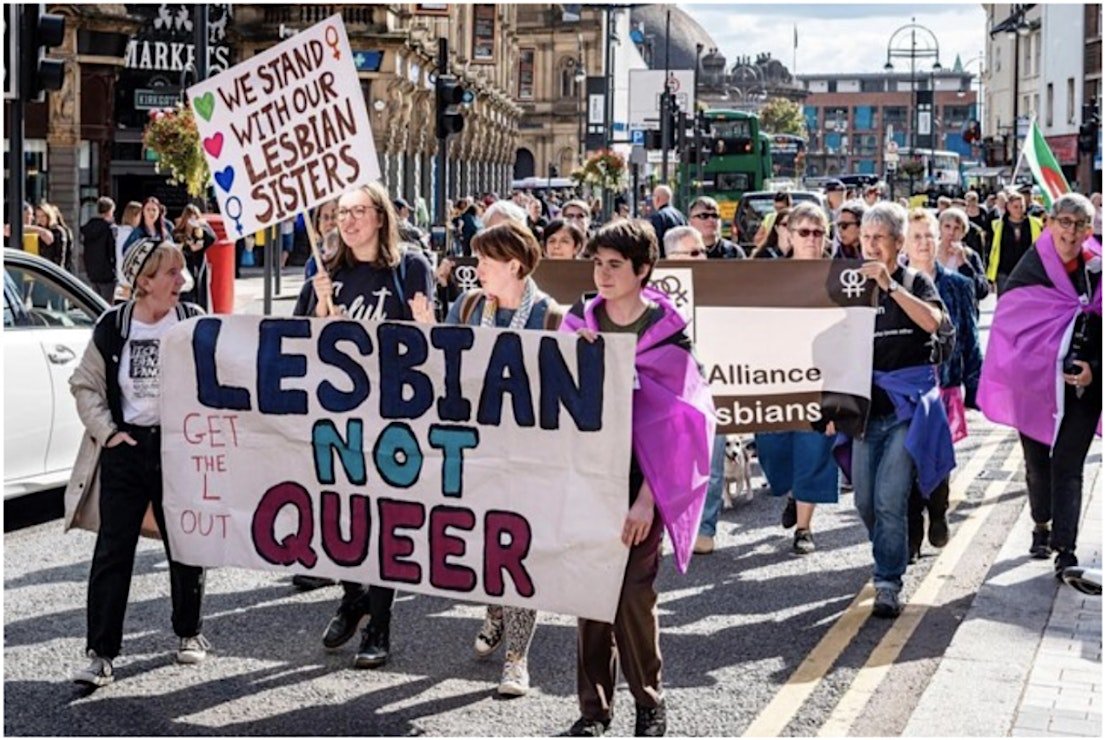Postmodernism rails against structures but has little practical utility in challenging the structures we live within.
To follow is an excerpt from Out of the Fog: On Politics, Feminism and Coming Alive (2022) published with kind permission from Spinifex Press.
In the first chapter of the book, Gerlich recollects her first impressions of postmodernism as a student in her late teens and early twenties:
Postmodernism and cultural relativism underpinned much of my university education, and these philosophical frameworks mixed uneasily with my conscience. Postmodernism seemed to be premised on the notion that since life is infinitely complex, ever changing, and incomprehensible, and since ‘the world’ is only knowable through unreliable, socially constructed ideas, there is no absolute truth, and therefore no right and wrong. Trying to answer big questions like, “what is the cause of suffering?” can only lead us to contrived answers that we try to impose on the world like little dictators.
I saw the truth in this proposition: of course life is incomprehensibly complex, ever changing, and impossible to capture in concepts. There was also something liberating in the idea that I was not, after all, responsible for all the poverty, famine, and starvation in the world. Yet it still seemed to me that the inordinate amounts of time and energy postmodern academics spent arguing that there was no such thing as truth could be better spent alleviating hunger. The idea that the world was too complex to grasp seemed both true and a cop out.
In Chapter Three, these reflections are fleshed out into an analysis of postmodernism from a feminist perspective, as follows.
Transgenderism – along with its contradictions and its disorienting effects – is supported in academia by postmodern theorists like Berkeley professor Judith Butler, author of Gender Trouble (1990), a sort of transactivists’ Bible. In the Guardian, Butler recently mused:
We generally think of sex assignment as happening once, but what if it is a complex and revisable process, reversible in time for those who have been wrongly assigned? To argue this way is not to take a position against science, but only to ask how science and law enter into the social regulation of identity.
This is typical postmodern ‘split self’ obfuscation. When Butler refers to ‘sex assignment’, what is she talking about? Generally, transactivists use this phrase to refer to the moment that doctors identify the sex of a baby – the sex that is then recorded on a birth certificate, which some people wish they could change because they are not happy with it. This is dissociation, which is both painful and understandable, given the world we live in – but the idea that doctors routinely ‘assign’ sex is still as absurd as the idea that sex is ‘reversible in time’.
The postmodern inclination to examine almost every concept as ‘socially constructed’ is not total baloney. Indeed, postmodernism shares the practice of radical questioning with Paulo Freire, feminism, and the Tao. In Pedagogy of the Oppressed (1970), Freire argued that no individual, and therefore no group, has the capacity to objectively know an entire concrete reality called ‘the world’. As we live, each of us makes a ‘world’ through a creative process of observing, interpreting, and deciding. In Freire’s words, “World and human beings do not exist apart from each other, they exist in constant interaction.” What Freire called ‘the world’, Andrea Dworkin called ‘reality’. She wrote about,
the distinction between truth and reality. For humans, reality is social; reality is whatever people at a given time believe it to be … Reality is enforced by those whom it serves so that it appears to be self-evident. Reality is self-perpetuating, in that the cultural and social institutions built on its premises also embody and enforce those premises …
Truth, on the other hand, is not nearly so accessible as reality. In my view, truth is absolute in that it does exist and it can be found. Radium, for instance, always existed; it was always true that radium existed; but radium did not figure in the human notion of reality until Marie and Pierre Curie isolated it.
All our communication is ultimately creative, our concepts constructed, and therefore so too is our ‘world’ and ‘reality’. As Cynthia Enloe writes, “As one learns to look at this world through feminist eyes, one learns to ask whether anything that passes for inevitable, inherent, ‘traditional’ or biological has in fact been made.” With these statements, Freire, Dworkin, and Enloe echo the Tao, which famously states that:
The Tao that can be told
is not the eternal Tao.
The name that can be named
is not the eternal Name.The unnameable is the eternally real.
Naming is the origin
of all particular things.
Truth is ultimately unnameable, and life is a mystery that, if it must be characterised, can only be characterised by change, by flux. What we call ‘material reality’ is a play of forms that arise, transform, pass away, and evolve. As we observe this play, we do not see absolute truths, only patterns of form. We speak and generalise about the patterns we see using signs, concepts, language, and metaphors that we agree upon and that ultimately become our ‘world’ or social ‘reality’.
The problem with postmodernism is not its rejection of absolute truth, and we do not need to believe in absolute truths in order to perceive biological sex – we only need to have the capacity to observe patterns, a capacity that is crucial to the everyday functioning of human beings. Indeed to sense and respond to patterns is the reason why we have sense perception, cognition, hippocampus, even muscle memory and reflexes. The pattern of sex is among the clearest and the first a human being identifies. The moment we are born, we instinctively look for our mother’s breast. From the time we are toddlers, we start to actively identify who is a boy, girl, man, or woman. This is not because we have been persuaded about any ‘truth’, but because we have mammalian instincts and the ability to notice patterns. This is all it takes to recognise sex.
If you refuse to name this pattern, it must be because – as George Orwell famously wrote – “The Party told you to reject the evidence of your eyes and ears.” Rejecting that evidence, on what basis can you accept anything that is even further removed from your own reality? The study and discussion of history, politics, foreign relations, wars taking place in countries we have never even visited – we must be unqualified to discuss any of this if we cannot discuss the patterns we can see for ourselves. In fact, language itself is constructed from generalisations based on patterns, each word being nothing but a social ‘agreement’. To relinquish the capacity to observe patterns, turn them into concepts using language (“that’s a table,” “that’s a dog,” “that’s a man,” “that’s hot – don’t touch!”) is to exist in a bubble, untethered from social reality.
Clearly, postmodernists are selective about the kind of concepts they wish to deconstruct, and ‘woman’ is the top priority. Their rejection of truth and generalisation does not lead postmodern academics to leap from their office on the third floor in a gesture of defiance against the concept of gravity, or to walk into oncoming traffic on the way to work because they find Newtonian physics too ideologically restrictive. In fact, postmodern academics are so decadent about indulging in social artifice that they are literally incomprehensible to many people who are not as institutionalised as they are. There are ways of writing, publishing, teaching, speaking, and even dressing that form part of the academic ‘world’. Is it not a little suspect for a group of people to accept facts, rules, patterns, and laws from the natural (like gravity and cause and effect) to the flagrant and institutional (like academic protocol, jargon, and attire) while becoming passionate about unravelling the concept of ‘woman’ – because suddenly it is immoral to observe, generalise and name?
This selectiveness is the mark of identification – ahaṃkāra. The difference between Freire, Dworkin, Enloe, and the Tao on one hand, and Butler and postmodernism on the other, is the difference between questioning concepts in the interest of ‘humanisation’ and solidarity with the oppressed, versus questioning concepts to consolidate external power in co-operation with the oppressor. Freire, Dworkin, and Enloe employ the idea of the world as discursively constructed not for the sake of it, but to help members of oppressed groups recognise the patterns of social conditioning, to ‘eject’ the oppressor from the mind, to ‘see with our own eyes’, and so change the world and restore it to love. Freire said that “The naming of the world, which is an act of creation and re-creation, is not possible if it is not infused with love.” Without love as a motivation, endless questioning can only lead to a paradigm of meaninglessness, something the postmodern zeitgeist reflects.
Postmodernism is the theoretical framework that supports neoliberalism. Like Protestantism and liberalism, it ostensibly arose to challenge tyranny. Just as Luther’s Ninety-five Theses opposed the Catholic Church and The Declaration opposed the rule of the British monarchy, postmodernism was a reaction to the rise of fascism and totalitarianism in the early twentieth century. That is why it claims to abhor imperialism and absolute truth. Yet, like John Adams writing the Declaration, it does not actually want to relinquish ‘Masculine systems’. The solution, as Catharine MacKinnon writes in her magnificent essay ‘Points Against Postmodernism’, is to be vague: “Domination, postmodernists know exists, but they don’t tell us how or where or why.”
Is this gaslighting? Literary theorist Terry Eagleton calls postmodernism a “cult of ambiguity and indeterminacy” that has bred “political illiteracy and historical oblivion.” As Somer Brodrib comments in Nothing Mat(t)ters (1992):
Strange timing. The explosion of consciousness and responsibility, the death of meaning, is being proclaimed by postmodernism. All this is occurring as feminist critiques of the economy of patriarchal ideological and material control of women emerge from women’s liberation movements.
Postmodernism appropriated and distorted feminist approaches to theory and analysis, using almost all the tactics on the ‘Power and Control Wheel’. MacKinnon, along with other feminists like Sheila Jeffreys, were involved with Women’s Studies departments set up within universities by Women’s Liberationists when postmodernism arrived on the scene. The anthology The Sexual Liberals and the Attack on Feminism (1990, to which both these authors contribute) analyses the coup that took place as Women’s Studies departments were usurped and replaced with Gender Studies and queer theory.
Feminist theory is distinct from fundamentalist ideologies precisely because it does not begin with a set of rigid, pre-constructed concepts, but with women’s subjective experience and commitment to humanisation shared in consciousness raising. As MacKinnon writes, “Feminism’s development as theory is impelled by the realities of women’s situation.” It is constantly shaped and re-shaped as women pose questions about our lives and notice the patterns our experiences form. These patterns combine to form analysis, and this analysis is dynamic, changing as the times change. But the simple premise of women’s humanity, from which women’s experience arises and is spoken, does not change – because it is a premise based on love and observation, not dogma.
For postmodernists, who claim to abhor ‘metanarratives’, it does not matter that feminist analysis is developed from individual expression, observation and the desire for liberation. The fact that an incalculably vast accumulation of subjective experience and observation of social patterns led feminists like Andrea Dworkin to theorise about something called ‘male supremacy’ is still too much for postmodernists to stomach. So, the feminist discussion of patriarchy is dismissed as a simplistic generalisation that denies individual agency (even as the analysis is shaped by individuals), and is not nuanced enough, not whimsical enough, not malleable enough.
The irony of this is as follows: if subjective experiences form patterns, and if these patterns are not allowed to indicate anything about institutional power or ‘Masculine systems’, then those systems cannot be analysed and remain well protected. This is how postmodernism can claim to be fundamentally democratic and supportive of subjectivity and identity in theory, while supporting the misogynist monolith of neoliberalism in practice. It is also what prevents movements like #MeToo from posing a serious threat: such movements cannot evolve from testimony to analysis to collective action if they cannot theorise about sex-based oppression. That is why #MeToo is allowed so much media coverage: it offers women the illusion of progress.
The spokespeople for mass movements such as #MeToo are also under immense pressure to accept ideas developed in queer theory and Gender Studies departments by academics like Butler. In 2018, during a launch for Rose McGowan’s book Brave, a man began to heckle McGowan about “transwomen,” “genocide,” and “white! Cis! Feminism!” from the audience. After initially responding calmly, McGowan became enraged and yelled,
don’t put your labels on me, don’t you fucking do that … I don’t come from your planet, leave me alone. I do not subscribe to your rules. I do not subscribe to your language. You do not put labels on me or anybody. Step the fuck back.
She later issued an apology to PinkNews, saying:
I would like to say I’m sorry. I didn’t have the correct language. I am, you know, an older woman from Hollywood. It’s not exactly the place for understanding new language, you know, had I said ‘cis woman’ – now I understand that that’s what I should have said. And it’s just been a learning process.
These ideas constitute the ‘backlash’ to Women’s Studies. In mind boggling displays of reversal and doublespeak, queer theory is now quite literally being sold to women as ‘feminism’ itself – a feminism in which the social reality of gender supposedly undermines the truth of biological sex; in which women ourselves are deemed unreal, an idea, and in which women must constantly apologise for not understanding the ‘new language’.
Gender Studies is the academic discipline in which the stories that rationalise and justify the abuses of prostitution, pornography and transgenderism are produced. The capture and distortion of Women’s Studies facilitated this process by allowing gender theorists to distort feminist arguments. Postmodernists take de Beauvoir’s argument that “One is not born, but rather becomes, a woman” (something I realised intuitively when I watched Sandy’s transformation in Grease) and turn it into an argument that sex is ‘assigned’ and that men, not just girls, can become women! Postmodernists take the feminist analysis of the patriarchal family as constructed and oppressive, and twist it into a defence of the surrogacy industry: if we can ‘construct’ one kind of family, what’s wrong with ‘constructing’ another? The call to destigmatise female sexuality has become grounds to support the sex trade lobby’s relabelling of prostitution as ‘sex work’, by calling it a form of individual female sexual emancipation. And, as Enloe writes, “Feminists always pay attention to pronouns.” She means that feminists do not take for granted that when writers like Adam Smith refer to human behaviour in terms of ‘mankind’ and ‘he’, that these terms should be read as neutral and generic, rather than reflections of male identification. The currently fashionable so-called feminist concern with pronouns has become an absurd proposition that everyone must declare whether they are a he/him, she/her or they/them.
My first reaction to postmodernism was ambivalent. Today, young women are being forced to account for an abundance of even stranger, more counterintuitive and nonsensical, postmodern ideas around them, clearly coming from universities and media, and highly fixated on sex and identity. As they find other women with the same questions, they receive a masterclass in sexist obfuscation tactics. To come out of the fog, it will help these women to make a habit of asking the question: who do these ideas really serve? And are they really healing, humanising and loving – or do they promote fear, denial and desensitisation?








Article Discussion